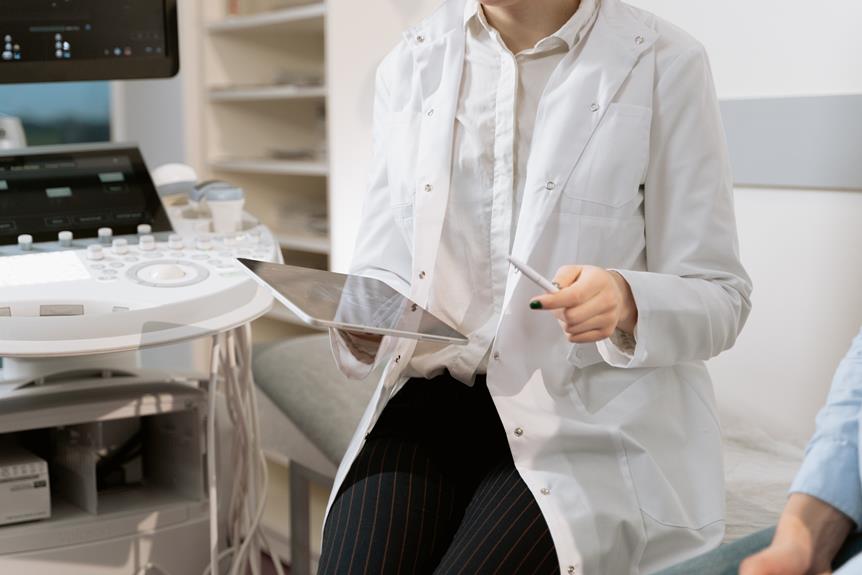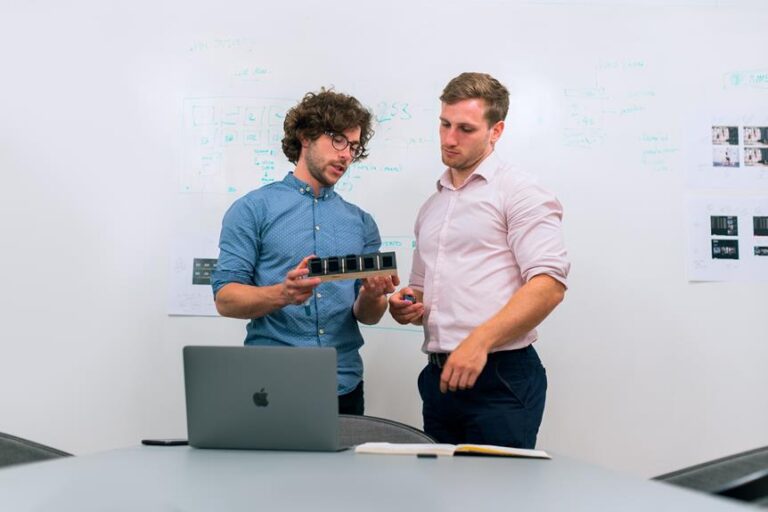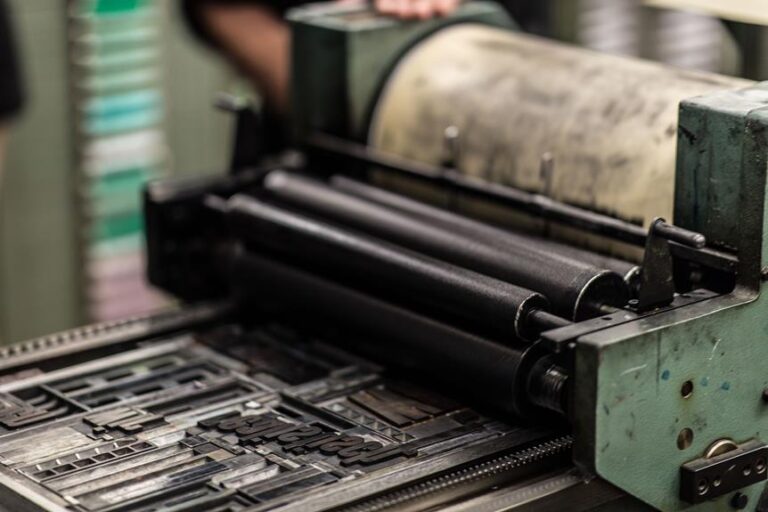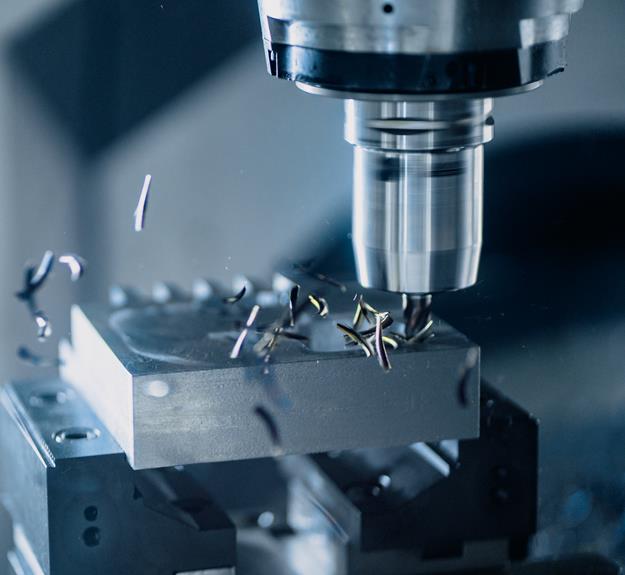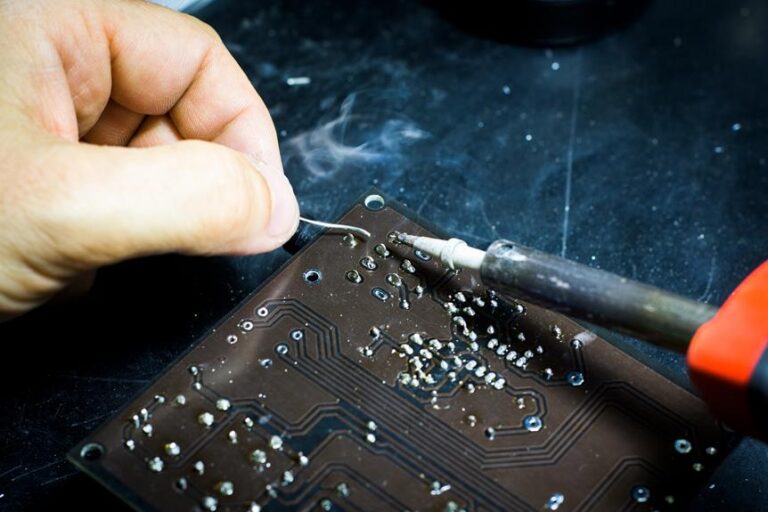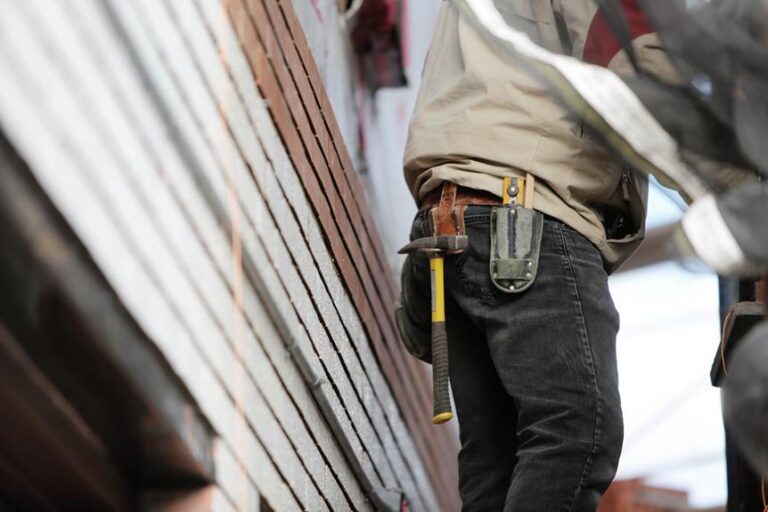Medical Applications of 3D Printing: Revolutionizing Healthcare
In the ever-evolving landscape of healthcare, a groundbreaking technology has emerged as a symbol of liberation and transformation: 3D printing. With its ability to create personalized implants, aid in surgical planning, and even generate organs, this innovative tool is revolutionizing the field of medicine.
This article explores the diverse medical applications of 3D printing and its potential to enhance patient care, advance precision medicine, and push the boundaries of healthcare technology. Prepare to embark on a journey into the future of healthcare, where endless possibilities await.
Key Takeaways
- Customized medical devices and implants tailored to individual needs
- Surgical planning and training using patient-specific anatomical models
- Advancements in prosthetics and transplants, including 3D printed organs
- Precision medicine and personalized treatments utilizing 3D printing technology
Enhancing Patient Care With 3D Printing
By utilizing 3D printing technology, healthcare providers can enhance patient care by creating customized medical devices and models tailored to each individual's unique needs. This innovative approach to healthcare is revolutionizing the field and has numerous applications in improving patient outcomes.
One of the key advantages of 3D printing in the medical field is the ability to create personalized medical devices. Traditional medical devices are often one-size-fits-all, but with 3D printing, healthcare providers can design and produce devices that perfectly match the patient's anatomy. This not only improves the comfort and effectiveness of the device but also reduces the risk of complications or discomfort for the patient.
Additionally, 3D printing allows for the creation of patient-specific anatomical models. These models can be used for surgical planning, allowing surgeons to better understand the patient's unique anatomy and anticipate any challenges they may face during the procedure. This technology also enables medical professionals to educate patients about their conditions and treatment plans more effectively, as they can use tangible, accurate models to illustrate complex concepts.
Personalized Implants: A Game-Changer in Healthcare
Creating personalized implants through 3D printing technology has emerged as a game-changer in healthcare. Medical 3D printing applications, also known as medical additive manufacturing, have revolutionized the way implants are designed and manufactured. Traditional implants are often limited in their ability to perfectly fit a patient's unique anatomy, leading to potential complications and discomfort. However, with 3D printing, surgeons can now create implants that are tailor-made for each individual patient.
The process begins with a detailed scan of the patient's affected area, such as a bone or joint. This scan is then used to create a digital model, which is imported into specialized software. The software allows surgeons to manipulate the model and make any necessary modifications. Once the design is finalized, it is sent to a 3D printer, which uses layer-by-layer additive manufacturing techniques to create the implant.
The ability to create personalized implants has numerous benefits. Firstly, it improves patient outcomes by ensuring a better fit and reducing the risk of complications. Secondly, it allows for faster and more efficient surgeries, as surgeons can have the implant ready before the procedure. Additionally, 3D printing technology enables the production of complex and intricate implant designs that were previously impossible to manufacture.
Revolutionary Surgical Planning With 3D Printing
The integration of 3D printing technology in surgical planning has brought about a paradigm shift in the field of medicine, allowing for more precise and effective procedures. Surgeons now have the ability to create patient-specific 3D printed models that replicate the anatomy of the individual being operated on. This has revolutionized surgical planning by providing surgeons with a tangible and accurate representation of the patient's anatomy, enabling them to better understand the complexity of the procedure and anticipate potential challenges.
The revolutionary impact of 3D printing in surgical planning can be seen in two main areas:
- Improved preoperative visualization: Surgeons can use 3D printed models to visualize the patient's anatomy in three dimensions, allowing for a better understanding of complex structures and their relationships. This enables surgeons to plan the surgery in advance, reducing the risk of complications and improving patient outcomes.
- Enhanced surgical training: 3D printed models can also be used for surgical training and education. Surgeons-in-training can practice complex procedures on patient-specific models, gaining valuable hands-on experience before performing the actual surgery. This improves their skills and confidence, leading to better surgical outcomes for patients.
The Future of Healthcare Technology: 3D Printing Innovations
The future of healthcare technology holds immense promise with the advancements in 3D printing.
One major area of innovation lies in the field of surgery, where 3D printing can revolutionize surgical planning by allowing surgeons to create patient-specific models and practice complex procedures before operating.
Additionally, the ability to create customized medical devices using 3D printing opens up new possibilities for improving patient outcomes and enhancing treatment effectiveness.
These innovative applications of 3D printing in healthcare signify a promising future for the field.
Advancements in Surgery
3D printing technology is poised to revolutionize the field of surgery, offering innovative solutions and advancements in patient care. This cutting-edge technology has the potential to improve surgical outcomes and enhance the precision and efficiency of procedures.
Here are some of the current advancements in surgery facilitated by 3D printing:
- Customized Implants: Surgeons can now create patient-specific implants using 3D printing, ensuring a perfect fit and reducing the risk of complications.
- Surgical Guides: 3D-printed surgical guides enable surgeons to accurately plan and execute complex procedures, improving surgical precision and reducing operating time.
- Training Models: 3D-printed anatomical models allow surgeons to practice complex procedures before performing them on actual patients, enhancing surgical skills and reducing risks.
These advancements in surgery are just the beginning, as 3D printing technology continues to evolve and transform the healthcare industry. The future holds even more exciting possibilities for improving patient care and revolutionizing surgical procedures.
Customized Medical Devices
Customized medical devices are revolutionizing healthcare technology through the innovative use of 3D printing. This emerging technology allows for the creation of personalized medical devices that are tailored to the unique needs of each patient.
By utilizing 3D printing, healthcare professionals can design and manufacture devices that fit precisely and comfortably, improving patient outcomes and overall quality of care.
3D printing also enables the production of complex and intricate designs that would be difficult or impossible to achieve through traditional manufacturing methods.
Additionally, the ability to rapidly produce customized medical devices reduces the waiting time for patients, ensuring they receive the care they need in a timely manner.
As 3D printing technology continues to advance, the possibilities for customized medical devices are limitless, promising a future of enhanced healthcare technology and patient-centric care.
Improved Patient Outcomes
By leveraging the advancements in 3D printing technology, healthcare professionals are able to achieve improved patient outcomes through personalized and precise medical interventions. This groundbreaking technology allows for the creation of patient-specific models, implants, and surgical guides, which can significantly enhance the effectiveness of medical procedures.
Here are some ways in which 3D printing is revolutionizing patient outcomes:
- Customized implants: 3D printing enables the production of implants that perfectly fit a patient's anatomy, reducing the risk of complications and improving overall treatment efficacy.
- Surgical planning: With 3D-printed models, surgeons can better plan complex procedures, minimizing the chances of errors and improving surgical outcomes.
- Prosthetics: 3D printing allows for the creation of personalized prosthetic devices that are tailored to individual needs, improving comfort and functionality for patients.
These advancements in 3D printing technology are paving the way for a future of healthcare where patient outcomes are optimized through personalized and precise medical interventions.
Advancements in Prosthetics Through 3D Printing
With the advent of 3D printing technology, significant advancements have been made in the field of prosthetics. Traditional prosthetic limbs often lack customization and are limited in their functionality. However, 3D printing has revolutionized the design and production of prosthetics, offering a range of benefits for both patients and healthcare professionals.
One of the key advantages of 3D printing in prosthetics is the ability to create customized devices. Unlike traditional manufacturing methods, 3D printing allows for the creation of prosthetics tailored to the specific needs and preferences of individual patients. This customization ensures a better fit and improved comfort, leading to increased patient satisfaction and better overall outcomes.
Furthermore, 3D printing enables the production of complex and intricate designs that were previously difficult to achieve. This opens up new possibilities for the development of advanced prosthetics with enhanced functionality. For example, 3D printing can incorporate intricate joint mechanisms or incorporate sensory feedback systems, allowing for a more natural and intuitive movement for the wearer.
In addition to customization and enhanced functionality, 3D printing also offers significant cost savings and reduced production time compared to traditional manufacturing methods. This makes prosthetics more accessible and affordable for patients, particularly in developing countries or regions with limited access to healthcare resources.
The advancements in prosthetics through 3D printing are just the beginning of the transformative power this technology holds for healthcare. The ability to create customized medical devices opens up endless possibilities for improving patient care and revolutionizing the way healthcare is delivered.
Customized Medical Devices: The Power of 3D Printing
Through the power of 3D printing, the production of medical devices can be tailored to meet the specific requirements of individual patients. This revolutionary technology allows healthcare professionals to create customized medical devices that fit perfectly and provide optimal functionality for each patient.
Here are some ways in which 3D printing is transforming the production of medical devices:
- Personalized Fit: With 3D printing, medical devices such as implants, prosthetics, and orthotics can be precisely customized to match the unique anatomy of each patient. This ensures a better fit and improved comfort, leading to enhanced patient outcomes.
- Complex Geometry: 3D printing enables the production of medical devices with complex geometries that would be difficult or impossible to achieve using traditional manufacturing methods. This opens up new possibilities for designing and manufacturing devices that are more efficient, durable, and effective.
- Reduced Lead Times: Traditional manufacturing processes for medical devices can be time-consuming, requiring multiple steps and long lead times. 3D printing significantly reduces the time required to produce customized medical devices, allowing patients to receive their devices faster and improving overall healthcare efficiency.
- Cost Savings: By eliminating the need for expensive tooling and reducing manual labor, 3D printing can help lower the production costs of customized medical devices. This makes personalized healthcare more accessible and affordable for patients.
3D Printed Organs: Bridging the Gap in Transplants
The shortage of organs available for transplantation is a major challenge in healthcare today.
However, the emergence of 3D printed organs offers a potential solution to this problem. By using 3D printing technology, organs can be created with customized designs and specifications, increasing the chances of successful transplantation.
Furthermore, advancements in tissue engineering have made it possible to create functional and viable organs, further revolutionizing the field of transplantation.
Organ Shortage Solutions
Utilizing advanced 3D printing technology, the creation of printed organs offers a promising solution to the ongoing shortage of viable organs for transplantation. As the demand for organs far exceeds the available supply, 3D printing has the potential to revolutionize the field of organ transplantation. Here are some key points to consider:
- Advantages of 3D printed organs:
- Customization: Organs can be tailored to fit the specific needs of each patient, reducing the risk of rejection.
- Reduced waiting time: The ability to print organs on demand could significantly reduce the waiting time for patients in need of a transplant.
- Challenges and limitations:
- Complex structures: Replicating the intricate architecture of organs is a significant technical challenge that researchers are actively working to overcome.
- Biocompatibility: Ensuring that 3D printed organs function properly and integrate seamlessly with the recipient's body remains a major hurdle.
While the development and widespread use of 3D printed organs is still in its early stages, it holds great promise in addressing the critical shortage of organs and improving the lives of patients awaiting transplantation.
Customized Transplant Options
How can the development of 3D printed organs revolutionize the field of organ transplantation by providing customized transplant options?
3D printing has the potential to overcome the challenges of organ shortages by creating organs that are specifically tailored to individual patients. With this technology, organs can be printed using a patient's own cells, reducing the risk of rejection and the need for immunosuppressive drugs.
Customized transplant options would eliminate the need for long waiting lists and reduce the risk of complications during surgery. Additionally, 3D printed organs can be designed to match the exact specifications and requirements of each patient, ensuring a higher success rate and improved quality of life post-transplant.
This breakthrough in organ transplantation paves the way for advancements in tissue engineering, which will be discussed in the subsequent section.
Advancements in Tissue Engineering
Advancements in tissue engineering have enabled the development of 3D printed organs, which are bridging the gap in transplants. This groundbreaking technology has the potential to revolutionize healthcare by addressing the shortage of organ donors and the long waiting times for transplants.
Here are some key advancements in tissue engineering:
- Improved bioink formulations: Scientists are developing bioinks that can mimic the properties of different types of tissues, allowing for the creation of more complex and functional 3D printed organs.
- Vascularization techniques: Creating a functional network of blood vessels within 3D printed organs is crucial for their survival. Researchers are exploring various strategies to achieve this, such as using sacrificial materials that can be dissolved to create hollow channels for blood flow.
These advancements in tissue engineering bring us one step closer to the reality of 3D printed organs, providing hope for millions of patients in need of life-saving transplants.
Precision Medicine and 3D Printing: A Perfect Match
The integration of 3D printing technology into precision medicine has proven to be a perfect match for advancing healthcare. Precision medicine is an approach that takes into account an individual's unique genetic makeup, environment, and lifestyle to develop personalized treatments. By combining this approach with the capabilities of 3D printing, healthcare professionals can create customized medical devices, implants, and even organs that are tailored specifically to each patient's needs.
One of the key advantages of using 3D printing in precision medicine is the ability to create complex and intricate structures that would be impossible to manufacture using traditional methods. This allows for the development of highly personalized medical devices that fit perfectly with the patient's anatomy. For example, 3D printing can be used to create patient-specific orthopedic implants that perfectly match the shape of a fractured bone, resulting in a more effective and comfortable treatment.
In addition to personalized implants, 3D printing also enables the creation of patient-specific organ models for surgical planning. By using medical imaging data, surgeons can create accurate replicas of organs that can be used for preoperative practice and simulation. This allows surgeons to better understand the patient's anatomy and plan the surgery more effectively, ultimately leading to better outcomes.
The following table illustrates some of the applications of 3D printing in precision medicine:
| Application | Description |
|---|---|
| Customized Implants | 3D printing allows for the creation of patient-specific implants that fit perfectly with the patient's anatomy. |
| Surgical Planning | By creating accurate organ models, surgeons can better plan surgeries and improve patient outcomes. |
| Drug Delivery Systems | 3D printing can be used to create personalized drug delivery systems that release medication at specific rates. |
| Tissue and Organ Engineering | Researchers are using 3D printing to create functional tissues and organs for transplantation. |
Transforming Dentistry With 3D Printing Technology
3D printing technology has revolutionized dentistry by allowing for the creation of customized dental appliances and improving the efficiency of dental procedures. This technology has transformed the field of dentistry in several ways:
- Customized Dental Appliances:
- With 3D printing, dental professionals can now create personalized dental appliances such as crowns, bridges, and dentures. These appliances are designed to perfectly fit each patient's unique oral anatomy, resulting in improved comfort and functionality.
- Digital Dentistry:
- 3D printing has enabled the digitization of dentistry, allowing for the creation of digital models of patients' teeth and gums. These digital models can be used for treatment planning, orthodontics, and prosthodontics. They eliminate the need for messy traditional dental impressions and enable more accurate and efficient treatment.
3D printing technology has also brought numerous benefits to dental procedures:
- Surgical Guides:
- 3D printed surgical guides aid in precise implant placement and complex oral surgeries. These guides are created based on virtual treatment plans, providing dentists with a highly accurate and predictable surgical tool.
- Rapid Prototyping:
- Dentists can now quickly and cost-effectively produce prototypes of dental restorations, allowing for efficient chairside adjustments and improvements. This reduces the time and cost associated with traditional laboratory-based processes.
3D Bioprinting: Pioneering Breakthroughs in Tissue Engineering
Bioprinting, along with the development of advanced materials and techniques, has opened up new possibilities in tissue engineering. This groundbreaking technology combines 3D printing with biocompatible materials and living cells to create complex three-dimensional structures that mimic human tissues and organs. Bioprinting has the potential to revolutionize healthcare by providing personalized solutions for tissue and organ replacement, drug testing, and disease modeling.
One of the key advancements in bioprinting is the use of bioinks, which are specialized materials that contain living cells. These bioinks can be precisely deposited layer by layer to create intricate structures. Researchers have also been exploring the use of different types of cells, including stem cells, to create functional tissues. By controlling the printing parameters, such as cell density and scaffold design, scientists can create tissues with specific properties and functions.
To illustrate the potential of bioprinting, consider the following table showcasing some recent breakthroughs in tissue engineering:
| Tissue/ Organ | Breakthrough | Application |
|---|---|---|
| Skin | 3D bioprinted skin grafts have been successfully transplanted onto patients with severe burns, improving healing and reducing scarring. | Regenerative medicine and burn treatment |
| Cartilage | Bioprinted cartilage constructs have shown promise in repairing damaged cartilage in joints, offering a potential treatment for osteoarthritis. | Joint repair and regeneration |
| Blood vessels | Researchers have successfully bioprinted blood vessels using a combination of bioinks and supportive structures, paving the way for patient-specific vascular grafts. | Vascular tissue engineering and transplantation |
| Heart | Scientists have successfully bioprinted heart tissue using a combination of cardiac cells and supportive materials, offering potential solutions for repairing damaged heart muscle. | Cardiac tissue engineering and transplantation |
These breakthroughs highlight the immense potential of bioprinting in tissue engineering and regenerative medicine. With continued advancements in technology and research, bioprinting holds the promise of transforming healthcare and improving the quality of life for countless individuals.
Frequently Asked Questions
How Long Does It Take to 3D Print a Personalized Implant?
The time it takes to 3D print a personalized implant varies depending on factors such as complexity, size, and material used. However, advancements in 3D printing technology have significantly reduced the time required, making it a viable option in revolutionizing healthcare.
Can 3D Printing Be Used for All Types of Surgical Planning?
Yes, 3D printing can be used for all types of surgical planning. It allows for the creation of accurate anatomical models and surgical guides, improving surgical outcomes and reducing risks for patients.
Are There Any Limitations to the Use of 3D Printing in Prosthetics?
There are limitations to the use of 3D printing in prosthetics. Factors such as material limitations, cost, and the need for skilled technicians can hinder widespread adoption. However, ongoing advancements may address these challenges.
What Are the Potential Risks and Challenges Associated With 3D Printed Organs?
The potential risks and challenges associated with 3D printed organs include the need for further research and testing to ensure their safety and efficacy, the complexity of recreating complex organ structures, and the ethical considerations surrounding their use.
How Does 3D Bioprinting Differ From Traditional Tissue Engineering Methods?
3D bioprinting differs from traditional tissue engineering methods by utilizing a layer-by-layer approach to create complex three-dimensional structures. It allows for precise control over cell placement and incorporation of multiple cell types, leading to more accurate and functional tissue constructs.
Conclusion
In conclusion, 3D printing technology has revolutionized healthcare by enhancing patient care, enabling personalized implants, revolutionizing surgical planning, and advancing prosthetics and organ transplantation.
One interesting statistic is that according to a study published in the Journal of the American Medical Association, 3D printing has reduced surgical planning time by up to 75% and has resulted in a 90% reduction in surgical complications.
This demonstrates the immense potential of 3D printing in improving healthcare outcomes and transforming the future of medicine.
